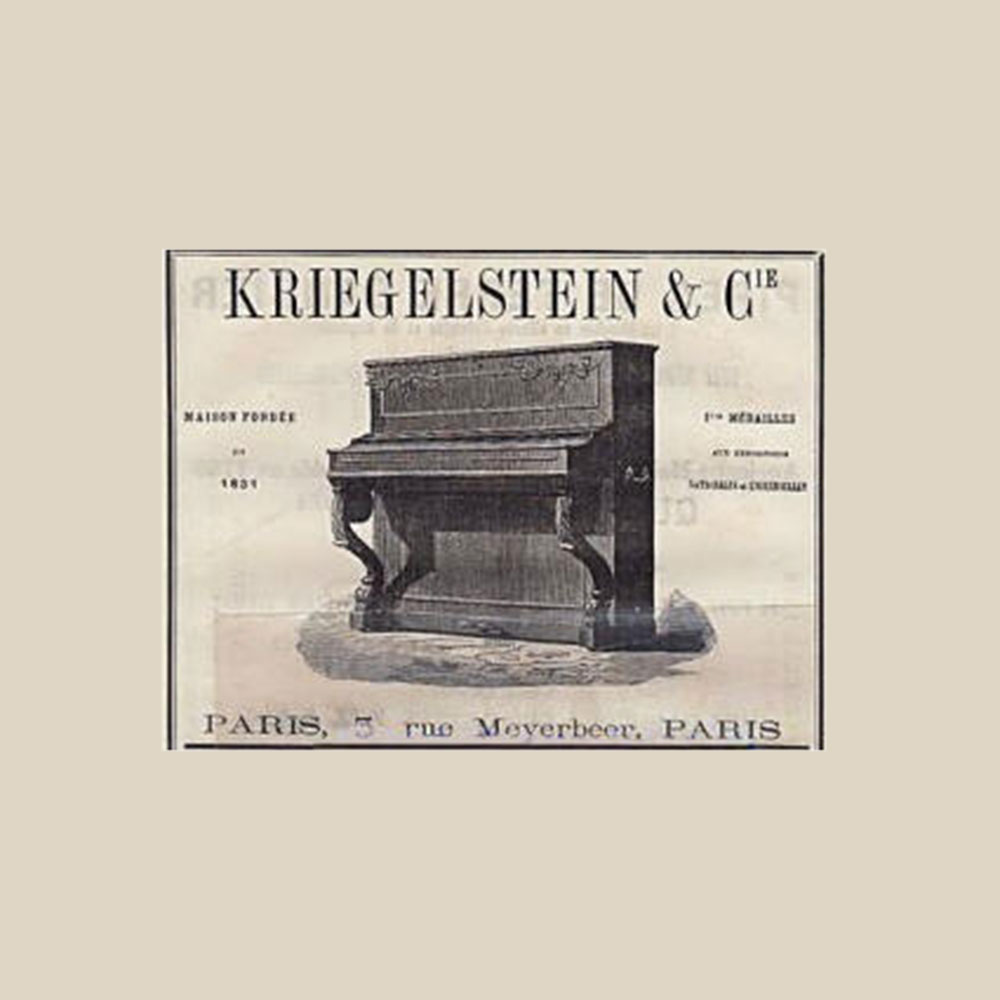Kriegelstein
Paris, France
"Jean Georges Kriegelstein was born in Riquewihr in Alsace around 1790.
He emigrated to Paris in 1815 and worked for several harpsichord makers such as Blanchet and Mercier, before turning to the piano with Henri Pape, where he was foreman for five years.
He opened his workshop in Paris in 1850 and made well-made upright pianos at attractive prices, and then began to make mid-sized grand pianos.
He was passionate about his work and about developments in music, dreaming up all kinds of inventions for the World’s Fairs in 1855, 1862, 1867, 1873, 1882, 1885, 1894 and 1897. In 1900 he won a gold medal and Kriegelstein was made a knight of the Légion d’Honneur.
In 1841 he invented agraffes, then in 1846 he invented a double escapement action that is known as the “Kriegelstein action”, to differentiate it from Erard’s.
In 1845, he made his first upright pianos with diagonal strings. Then he adapted the single piece cast iron frame for grand pianos and later for upright pianos.
Jean-Georges Kriegelstein died in 1865, his son Charles having overseen manufacturing from 1858 onwards.
In 1897, the Paris factory in boulevard Bessières moved to Droittecourt in Oise and modernised, with several new machines and a large timber yard.
Production increased and extra-small grand pianos (150cm) proved a great success. The design was refined over time and around 1925-1930 it had the rather lovely name of the “Bijou” piano.
A maker’s certificate was always pasted to the grand pianos. It bore the piano’s number and Kriegelstein’s signature.
Charles’s son Georges managed production until 1922, followed by his son-in-law, Mr Boulé, who took over until the factory closed in 1931.
Their upright metal framed pianos, cross-strung with Schwander actions made between 1925-1930 are well-made, decent and solid instruments, often with very beautiful marquetry with precious wood veneers.
By the time Kriegelstein closed in 1930, the firm had made 25,700 pianos."




